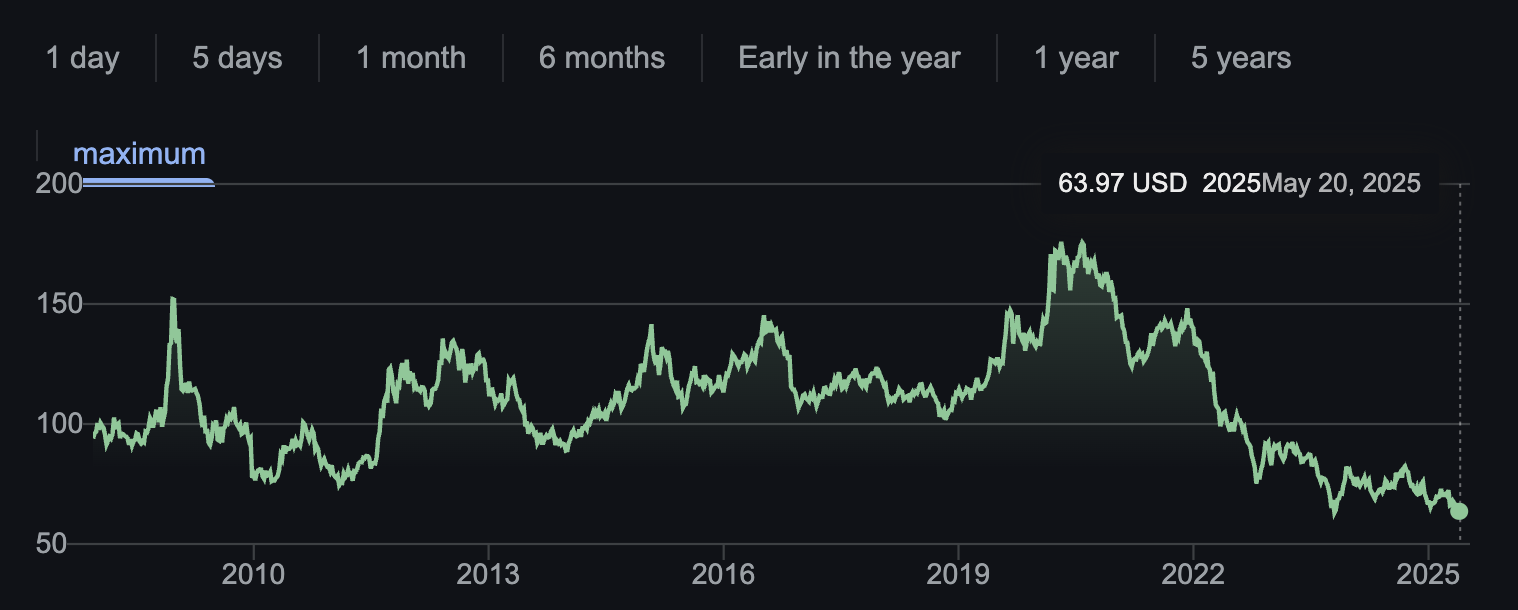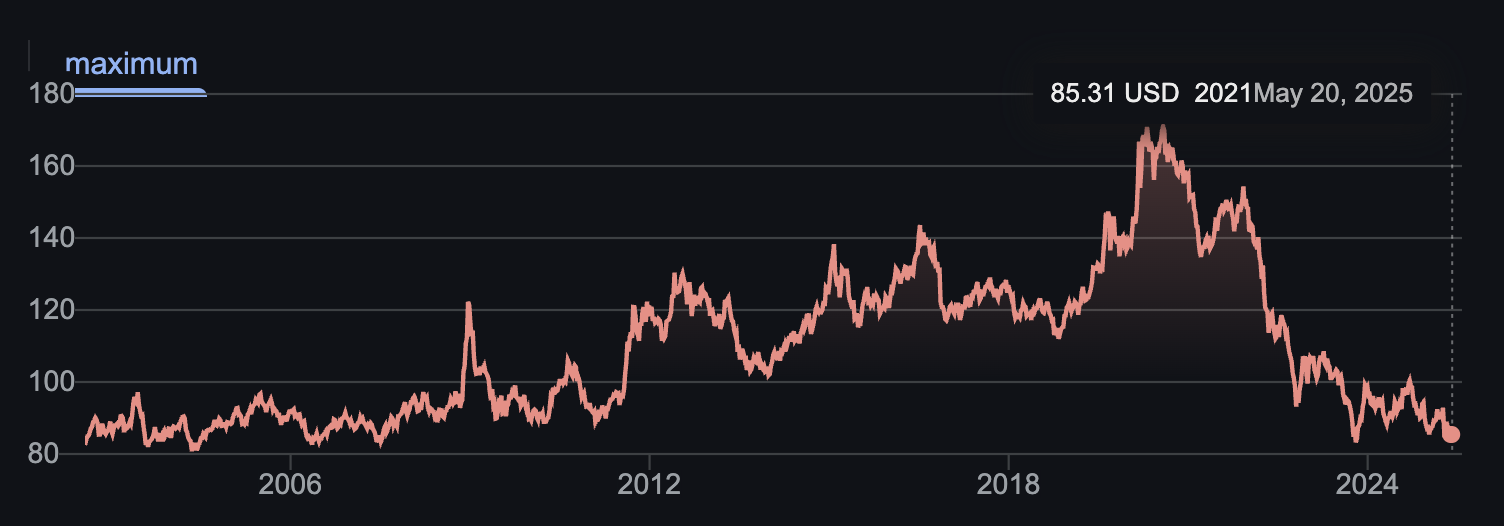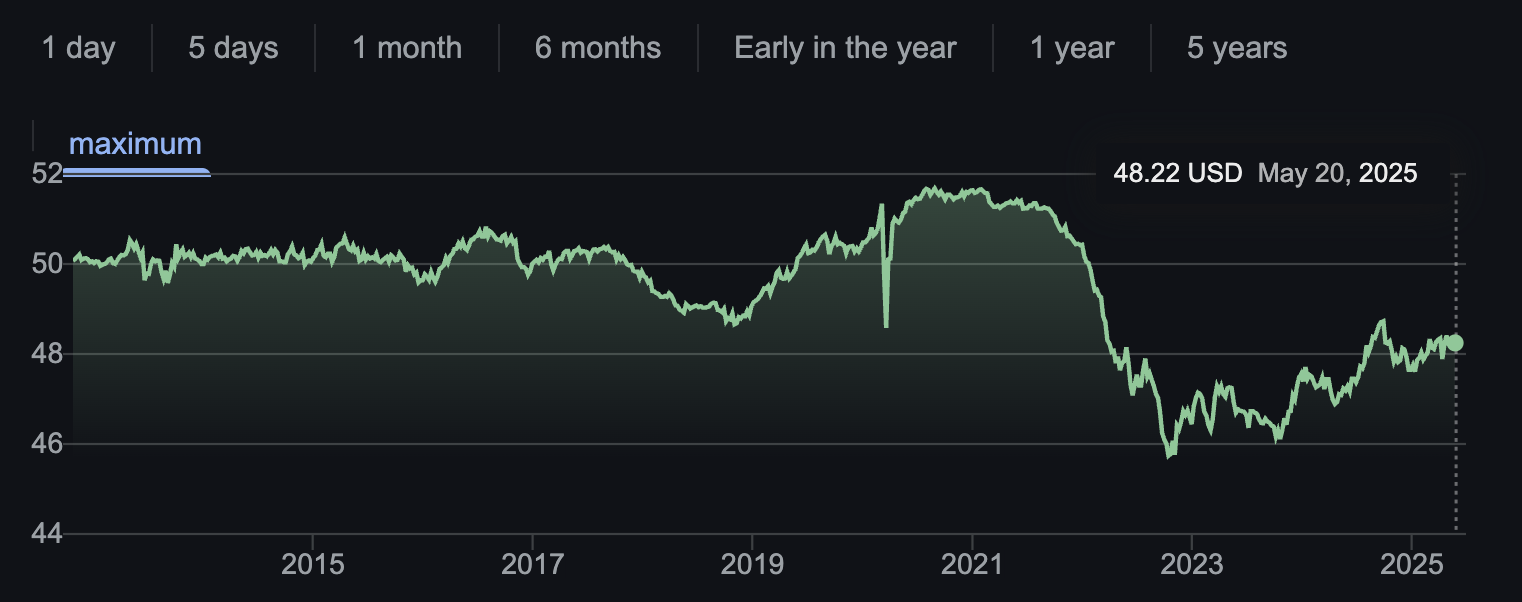『Scenery of New York City』
image extraction: Firefly
EDV
Seeks to track the performance of the Bloomberg U.S. Treasury STRIPS 20–30 Year Equal Par Bond Index.
(Citation: investor.vanguard.com)

TLT
The investment seeks to track the investment results of the ICE® U.S. Treasury 20+ Year Bond Index (the “underlying index”).
(Citation: investor.vanguard.com)

IEF
The investment seeks to track the investment results of the ICE® U.S. Treasury 7-10 Year Bond Index.
(Citation: investor.vanguard.com)

ISTB
The investment seeks to track the investment results of the Bloomberg U.S. Universal 1-5 Year Index, which measures the performance of U.S. dollar-denominated taxable bonds that are rated either investment-grade or high yield with remaining effective maturities between one and five years.
(Citation: investor.vanguard.com)

(Image: Google Search)
TLT and EDV
As someone holding TLT and EDV, the poor performance of U.S. Treasuries is not someone else’s problem.
Persistent inflationary pressures in the U.S., prolonged high interest rates, an expanding fiscal deficit, massive issuance of government bonds, and the Fed’s balance sheet reduction are cited as reasons for the price decline.
In addition, tariff risks from the current administration and the recent downgrade of U.S. Treasuries by Moody’s are likely negative factors.
These issues seem to be connected to broader international developments—namely, the perceived decline in America’s global dominance as a superpower and the accompanying rise of authoritarian states like China. That may be a simplistic view, but still.
While some believe the decline may pause depending on the Fed’s guidance—such as the possibility of a rate cut in September or a halt to quantitative tightening (QT)—as a retail trader who relies on technical analysis, I neither have the motivation nor the ability to analyze or interpret such Fed communications.
The only thing I need to think about is under what conditions I should reduce my holdings.
Why I Bought U.S. Treasuries
The initial reason I started buying U.S. Treasuries was as part of a diversified investment strategy.
Since I invest in relatively risky assets like stocks and commodities, I was gradually purchasing what were considered (or had been considered) relatively safe U.S. Treasuries to mitigate those risks. Essentially as a way to reduce investment risk—almost like a savings account.
I never expected that U.S. Treasuries, supposedly the safest asset, would drag down my investment performance this much.
I fully understand that, since I bought them with the intention of holding for decades, I shouldn’t be getting emotional over short-term price movements.
Still, the environment surrounding U.S. Treasuries is just too bad.
All I Hear Are Bad News
Like in Japan and Europe, long-term interest rates are starting to rise again, and it seems like that trend is just getting started. There’s a concern that the period since the historic U.S. Treasury crash a few years ago was just a pause before another leg down. That’s certainly how the chart is starting to look.
Most of the news I hear is negative, but rather than just fearing the fall in U.S. Treasuries themselves, there seems to be more concern about the broader impact on other sectors.
Holders of U.S. government bonds are spread across the globe—ranging from sovereign states to companies in various industries, and even individual investors.
Just last month (May 2025), Norinchukin Bank was reported to have suffered a ¥1.8 trillion loss from “failed foreign bond investments.”
It’s not solely because of U.S. Treasuries, but there’s no doubt that this is deeply tied to global developments, and I personally feel the situation is quite ominous.
…Still, during times like these, I can’t help but recall a famous market saying…
True buying opportunities come when there’s total pessimism
After a massive crash, U.S. Treasuries are entering another selloff phase without any significant rebound—chart-wise, it’s among the worst price actions.
Though I had judged that the crash had settled and started accumulating for long-term holding, panic-selling now would be the height of foolishness.
The real reason I’m so nervous about the drop in U.S. Treasuries is that I made TLT and EDV too large a portion of my portfolio. Reducing that proportion is really all I need to do.
That means I’d be locking in losses on part of my position, but the thought that nags me is: “Am I selling when it’s actually the time to buy?”
I recently caught a glimpse of a major bank recommending long-term U.S. Treasuries, but aside from that, the sentiment seems to be near total pessimism—or just a step before it.
And precisely because of that, I start to wonder if now isn’t the time to reduce my exposure, but rather increase it.
…I don’t have that kind of courage, but for now, my conclusion is that I don’t need to make any adjustments to my position just yet.
Timing the Stop-Loss
Some people have rules like cutting losses if unrealized losses exceed 20% of their assets. Everyone has their own rules.
If the losses exceed your tolerance, naturally you start trimming, but in my case, I haven’t defined any clear numerical threshold.
My stop-loss standard is simply this: I would consider a full exit only when I can no longer believe in the future economic growth of the U.S.—a completely boring and obvious standard, but it’s the only way I can put it.
What matters more than surface-level figures like GDP or trade balance is the intangible atmosphere of the country I lived in for eight years. If that sense of America breaks down irreparably, that would be the real signal to exit.
Not due to some sudden event, but a long-term decline where eventually even Americans themselves stop believing in their country’s global dominance—that would be the line crossed.
I imagine it would feel similar to the atmosphere in Japan during the 2010s.
America is not such a fragile country that it would crumble from the emergence of a single president. One should never underestimate the obsession—truly unimaginable in strength—of Americans, and more broadly Anglo-Saxon whites, with maintaining their global dominance.
Putin once said, “What meaning is there in a world without Russia?” In the U.S., not just the president but countless Americans feel that deeply and clearly about the United States of America.
That is why I buy U.S. Treasuries—for better or worse.



